Alex Amit's Blog, page 2
January 3, 2022
I’m fifty-five today, and I want to celebrate with you, my readers
I’m fifty-five today, and I want to celebrate with you, my readers

I’m 55 today, my first full year as an author of historical fiction.
Though I always dreamt of writing books, I only wrote my first one three years ago, at the age of fifty-two. I guess it’s never too late to start fighting for your dreams.
Before that, besides being a parent and working in computer programming, I painted and photographed for many years. Still, I opened my doc sheet just about three years ago and started to write my first novel.
To be honest, I think my first three books weren’t that good. They were romantic and sweet, but to me something was missing. It took me some time to figure out the missing part. After a lot of thinking, I said to myself: ‘Hey, why don’t you write about a subject you really like and know and read a lot about? Why don’t you write about history?’ And on that day I started to write The Girl Under the Flag, my first historical fiction novel.
This year has been good to me, even though the pandemic affected the lives of everyone, and mine as well. A year ago, I released The Girl Under the Flag as the first book in a series. Later this year I wrote my second novel, The Wounded Nurse, due for release in a few months, and these days I’ve started the third book in the series, hopefully to be released in the coming autumn. It was a busy and enjoyable year of writing for me.
But all this couldn’t have happened without you, my readers, and I thank you for reading my books and newsletters.
And I want to thank you, my loyal newsletters readers, with a small gift. Today and tomorrow, my two short stories “The Soldier’s Hobnailed Boots” and “Four Franc Coins” will be free on Amazon. You are invited to grab them.
Thank you, and Happy New Year!

The post I’m fifty-five today, and I want to celebrate with you, my readers appeared first on Alex Amit.
December 8, 2021
It took some time, but finally, the audiobook ‘The Girl Under the Flag’ is online
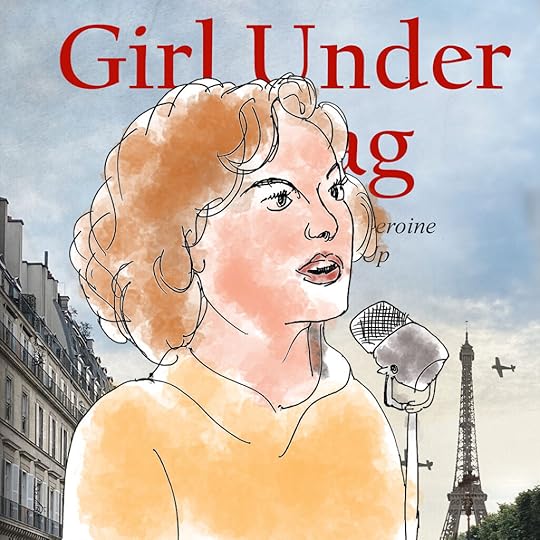
Narrated by Rebecca Gibel
Almost a year ago, since the book “The Girl Under the Flag” was published, I wanted to put it out there in an audiobook version, but it took some time.
I was busy writing my second novel, “The Wounded Nurse”, which will come out this spring, and it also took me a while to learn about the audiobook world and how to produce them. And finally, I signed an agreement with Tantor media company, a leading independent audiobook publisher.
And now, just before Christmas, the book is alive!
Narrated by Rebecca Gibel, an award-winning stage, television, and voice actress, the book sounds wonderful, and believe me, Rebecca has a much better voice than I do, so it was a really good decision to have her read the book instead of me.
You’re welcome to download the audiobook on Chirp website or on Amazon.
The post It took some time, but finally, the audiobook ‘The Girl Under the Flag’ is online appeared first on Alex Amit.
November 26, 2021
A new book on the way, ‘The Wounded Nurse.’
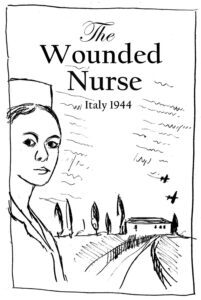
I’m excited to tell you that I will be releasing a new book soon, ‘The Wounded Nurse.’ The story of an American Medical Corps nurse coming to Italy to help the wounded, but is injured by a German plane attack and loses her leg.
The novel tells about her struggle to become a nurse once again and the relationship between her and John, a blind wounded soldier to whom she reads letters at night.
To me, as a writer, every story has its own difficulties, and ‘The Wounded Nurse,’ was not exception. In this book, the challenge was the starting point. Even though I had the entire plot in my head, I couldn’t decide what would be the best starting point for Grace, the heroine, to start her journey.
‘OK,’ I thought to myself, ‘so the story takes place in Italy, during the endless battles to break through the German defensive line, but where do I want it to begin? Do I want the heroine to start her journey from the North African desert to Italy? Maybe the port of Naples is the right place for her, as she disembarks the ship? Or perhaps, arriving from Cairo, where a large British Army headquarter was stationed?
Eleven versions were written for the beginning, but I didn’t like any of them until I wrote number twelve; a field hospital south of Rome in the middle of a major attack against the Germans line.
Currently, I’m editing the book and preparing the cover sketches, and in a few months, to the book will be published. And with every day that goes by, I’m more excited.
The post A new book on the way, ‘The Wounded Nurse.’ appeared first on Alex Amit.
March 12, 2021
Collaborator or Hero?
The Fashion industry of Paris under Nazi occupation.
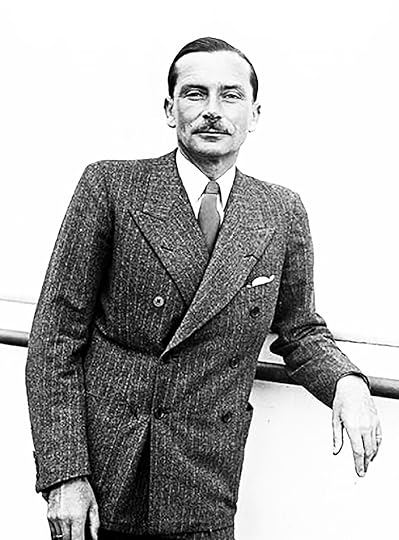
When the Germans conquered France in June 1940, they had one clear goal, to make Berlin the world’s capital. They planned to set the longest boulevards in Berlin, and an Arc de Triumph that would make the one in Paris look small, and of course Berlin would be the fashion capital of the world.
To set their plan in motion, the Nazis ordered all Parisian fashion houses to transfer their businesses from Paris to Berlin. The fashion houses had only one option left, to try to convince the Germans to change their minds.
For this mission, Chambre Syndicale president and small fashion house owner Lucien Lelong was sent to Berlin to try and persuade the Germans to change their order. Lelong explained to the Nazis that while the big fashion houses could be moved to Berlin, this action would destroy the entire fashion industry. According to him, all the big fashion houses relied on thousands of workers who served them, starting with button-makers, buckles, dye, and the fabric-dyeing industry. Not all of them could be transferred to Berlin.
The Germans were persuaded, and agreed to leave the French fashion industry in Paris. Throughout the war, German socialite women would come to Paris and purchase the best French fashion with German money, acting like the war ’didn’t exist.
After the war, the French fashion industry was accused of collaborating with the Germans while the French people suffered from a severe shortage of money and food. And there were murmurs that Lelong had been a collaborator. His case came to trial, but he was acquitted. The judge ruled that Lelong had cooperated only minimally with the Nazis to save France’s cultural heritage and its workers’ jobs.
Was Lelong’s agreement with the Nazis an act of collaboration or a heroic rescue of 12,000 jobs during wartime?
After the war, Lucien’s fashion house stopped working, and he is remembered only as the man who saved the Paris fashion industry, or a man who collaborated with the Germans.
During times of war, sometimes the line between collaborator and hero is not so clear.
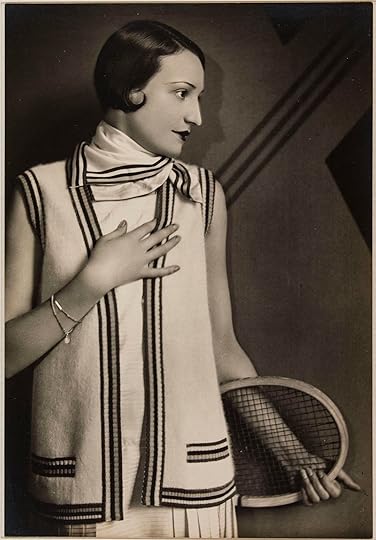
LUCIEN LELONG SPORTSWEAR By Egidio Scaioni / Palais Galliera, musée de la Mode de la Ville de
The post Collaborator or Hero? appeared first on Alex Amit.
February 17, 2021
Green Eyes / Brown Eyes
How easy is it to create discrimination?
After Martin Luther King was murdered in April 1968, Jane Elliott, a third-grade teacher from Iowa, tried to explain to her confused and upset pupils why someone could kill another person for being different. So she decided to create a lesson on discrimination for her all-white students, to teach them what discrimination feels like.
The next day, Jane Elliott divided her pupils by eye color, one group for brown eyes and another for green. Throughout the first day, she told the green-eyed children that they were smarter, let them answer in class, and gave them privileges like longer recess. In contrast, the brown-eyed students had to wear collars around their necks and were criticized for their behavior and answers in class. On the second day, the rules were reversed.
During those two days, Jane Elliott was stunned by the children’s behavior: the ones that were declared inferior started behaving like inferior students, performing poorly in class. On the other hand, the “superior” children started discriminating against the “inferior” children, acting rudely towards them.
“I watched what had been marvelous, cooperative, wonderful, thoughtful children turn into nasty, vicious, discriminating little third-graders in a space of fifteen minutes,” said Elliott.
Elliot repeated that test several times over several years. Some of them were photographed, and at all times the results were the same. When you declare a group to be superior, they start acting with discrimination towards other people.
Years later, one of the students said: “Nobody likes to be looked down upon. Nobody likes to be hated, teased or discriminated against.”
This experiment became a famous experiments in group behavioral psychology, and Jane Elliott dedicated her life to teaching against discrimination.
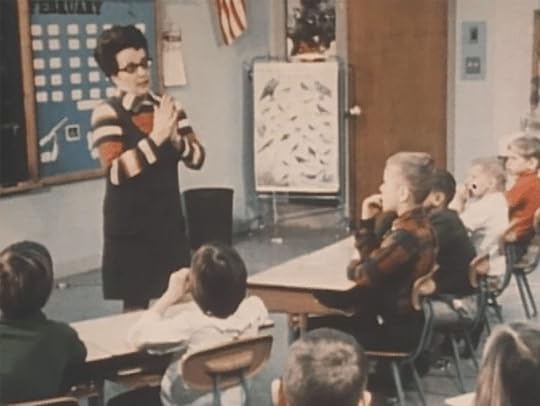
The post Green Eyes / Brown Eyes appeared first on Alex Amit.
January 27, 2021
At the Gates of Hell
On the afternoon of January 27, 1945, Sergeant Vassili Krasnov of the Red Army’s 322nd Rifle Division stood at the gates of Hell.
Beyond the barbed wire fences surrounding the enormous camp, he could see thin people in striped uniforms, walking slowly and approaching the fence apprehensively. Vassili held his rifle firmly with both hands and passed under the gate, raising his eyes to the metal sign above his head: “ARBEIT MACHT FREI”. He looked carefully to the sides, checking for SS soldiers who might have been hiding in the guard towers.
“What is this place?” Vassili asked a thin girl who approached him with a hesitant step. She ignored his drawn weapon, reached out her hand, and carefully touched a finger to the red star emblem embroidered on his green uniform.
“Auschwitz,” she answered with a Polish accent, continuing to gently stroke the red star.
Only in the following days, as medical and food convoys entered the camp, would Vassili and his friends find out what happened behind those electric barbed wire fences, between May 1940 and January 27 1945, and those sights would shock them and the world from that day on.
How could the Holocaust have happened? Could it happen again? What must we do to ensure that Auschwitz never returns?
As a Jew who grew up in the State of Israel, the shadows of the Holocaust accompanied my childhood, in stories told by older survivors who carried tattooed numbers on their arms, asking us, the younger generation, to make sure it would never happen again.
Last week, in my newsletter about the American spirit, I asked what the American spirit means to you. As I read your opinions, I could notice the words Freedom, Hope, Peace,and the ability to protect yourself. None of these were present during the Holocaust. Which was when people needed them more than ever.
When I grew up and joined the army, I wanted to be strong, terribly powerful, so powerful that no one could ever harm us again. I commanded tanks and fired almost all possible weapons from rifles to machine guns to cannons, and never stopped practicing. I can say I never fired and hurt anyone, but I’m prouder to say that I never let anyone hurt me.
But I wanted to know more, and as the years went by, I studied psychology, trying to understand the human psyche, evil and kindness, why people killed each other, and how human beings could share their last piece of bread with strangers. I learned the power of social influence and incitement, and how devastating a group could be. In my next newsletter, I will write about one of the most famous social experiments. Still, even after reading so many books, I’m not sure I can understand the power of evil.
When I started my career as a writer, I wanted to write the story of different women in wartime and their struggles, American, British, Australian, from many countries, of many identities and skin colors. But it was clear to me that the first book would be dedicated to a Jewish girl and her struggle to escape the gates of Hell waiting for her at the Auschwitz concentration camp.
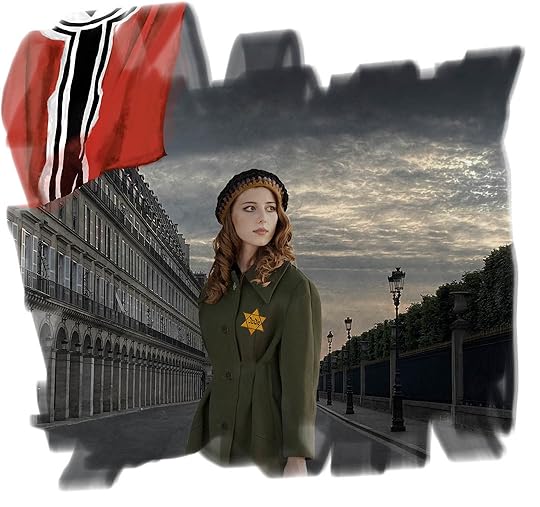
The post At the Gates of Hell appeared first on Alex Amit.
January 18, 2021
The New Colossus
On the morning of January 20, 1905, eighteen-year-old Paulina Velas climbed to the deck of the Batavia and looked out at the horizon. Despite the cold air that made her shiver, she remained standing on the deck, wrapped in her old wool coat while her hands held the rain-soaked metal railing. Her nose still carried all the smells of sweat from third-class, and she breathed the fresh air deeply, standing in the cold wind. For three weeks now, since she’d walked up the gangway at Hamburg’s port, Paulina was packed into a small cabin. For days she was surrounded by gossip women, crying babies, and men trying to reach their hands out and touch her body, whispering disgusting words to her. But now she did not care about any of that. Paulina stood on the deck, crammed among all the people, and looked at the copper woman revealed to her through the mists of the morning. She had always heard stories about the statue standing at the port’s entrance, and now she finally saw her and wiped a tear of excitement from her cheeks. The long journey from her small hometown in Poland had come to its end.
As the ship passed the Statue of Liberty, Paulina noticed the huge buildings on the horizon. She had never seen such large buildings, but she knew it would take some more time before she could reach them. Before that, she would have to pass a health inspection, and she would be asked all sorts of questions, but she was not worried. She was young and healthy; she also practiced her English every night, “Yes sir” and “No sir” and “I want to live in America.” Her hand touched the lining of the coat gently, feeling the three hidden gold coins that her mother had given her before the trip, attached with a postcard with a distant relative’s address on one side and a painting of a ship and the Statue of Liberty on the other. Her eyes focused on the torch raised high and the crown on her head.
The whole deck was crowded with strangers who all mumbled with excitement at the sight of the new homeland, revealed to them through the fog for the first time.
Paulina did not know it, but there were more struggles for her to fight, women’s suffrage, to be equal to men, to always keep protecting democracy from the ones who wanted to smash it. But she was willing to fight for her new homeland, like all those millions of immigrants who came before her and the ones that would follow in the years to come.
I too am a foreigner. I sit in my small studio far away and watch the American nation with appreciation, for their bestowing of so many values to the world. And to me, to all of them, the essence of the American spirit is summed up in two lines embedded on a metal board at the foot of the Statue of Liberty:
“Give me your tired, your poor,
Your huddled masses yearning to breathe free…”
Neither nobles nor barons nor kings built America, but ordinary immigrants who carried a dream of freedom and democracy. In my opinion, the simple people are the power and strength of this mighty nation, even if the road there is full of bumps and difficulties that sometimes reach the doors of Congress.
These days, the American nation is appointing a new president.
These days are days of pride for the American nation.
God bless America.
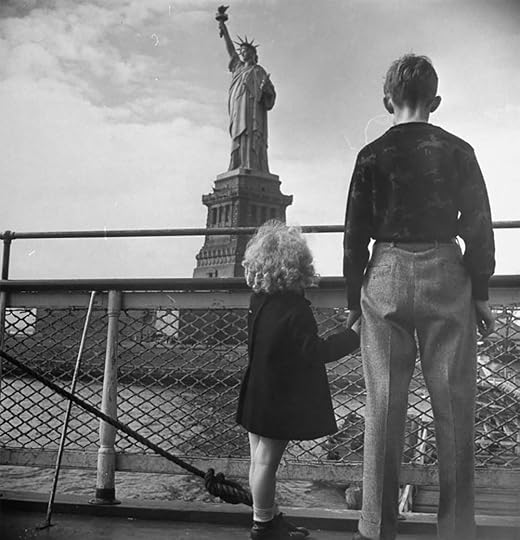
Refugee children gazing at Statue of Liberty from railing of boat. (Photo by Jerry Cooke/Pix Inc./The LIFE Images Collection/Getty Images)
The post The New Colossus appeared first on Alex Amit.
January 1, 2021
The winter of 1943, Hope For the Future
Every year, before the new year begins, I sit in my small studio and think about the last year, trying to describe it to myself before turning the page to the new year to come.
This year, the pandemic changed the world. People had to move away from each other. Many lost their jobs, stayed at home for a long time, and had to settle for less and start worrying about the future. Everything that was safe and known crashed all over the world like the Great War and the Winter of 1943.
The Winter of 1943 was harsh, the US had been fighting for two years at that point and rationing had been introduced to most groceries. Many men joined the army and were serving far away from their families, and huge oceans separated them and their loved ones. The radio stations played Bing Crosby’s new hit “I’ll Be Home for Christmas.” But most listeners could only dream about home.
North of London, at Podington Airfield, Lieutenant F. Cupp, the pilot of a B-17 bomber, and his friends from the 325th Bomber Squadron decorated a fir tree inside the briefing room hut. They didn’t say it out loud, but they all hoped they would stay alive next year.
In a suburb of Seattle, Rosie entered her home after a 12-hour shift at Factory 2, the Boeing B-17 bomber production line. She wanted to celebrate, but she was too tired, and she settled for washing her face in the sink before going to sleep. Rosie couldn’t stop smiling, watching herself in the mirror; there was a letter in the mailbox for her today from the one she loved, who was fighting in Italy. She hoped that next year he would come home and propose to her.
South of Rome, outside a large villa that had been converted into a field hospital, an Australian nurse in a white uniform came out of the large building. She walked slowly on the gravel and watched the large Red Cross emblem spread on the ground. Although she did not smoke, she lit a cigarette for herself and looked at the starry sky, wishing to herself that the hospital would be emptied of wounded and that she would be able to return home.
Two thousand, two hundred miles north of Melbourne, a group of soldiers tied a Santa doll to a military jeep and strolled through the jungles of New Guinea. They all were singing, even though they knew they would have to storm into the jungle again in a few days, in search of hidden Japanese soldiers. For them, New York was so far away.
In Brooklyn, a small family finished dinner with a prayer for the father’s safety. For so long, no letter was received from him. They only knew he was on a battleship in the Atlantic or the Pacific. He was not allowed to tell them where.
Everyone was tired of the protracted war, and no one knew that change was on the way.
In the secret war rooms in London, Normandy’s invasion plans had already been made, but in the winter of 1943, they were still a secret that would only be revealed six months later.
In the Winter of 1943, everyone prayed for hope for the next year, and it came.
I wish for all of us that next year will be like the year after the Winter of 1943.
A year of hope for the future.
Happy New Year,

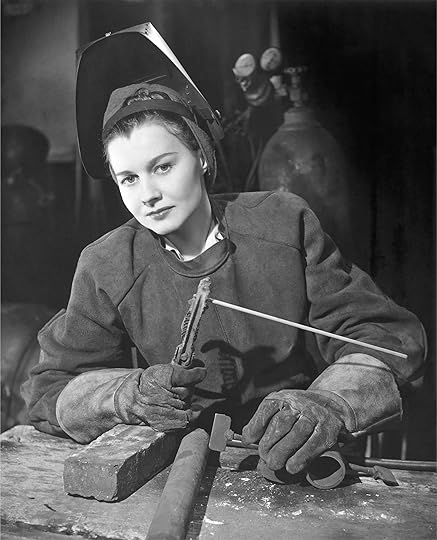
The post The winter of 1943, Hope For the Future appeared first on Alex Amit.



